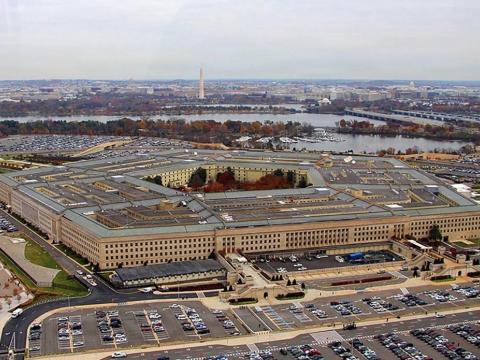Cyber Needs to Be Integrated, Not Treated Uniquely
The focus of the second annual Cyber Education, Research and Training Symposium (CERTS) is national cyber policy and cyber workforce training. During his keynote address, Brig, Gen. Dennis A Crall, USMC, principal deputy cyber advisor, Office of the Secretary of Defense, stated, “Education and training is assembled for one reason and one reason only, and that’s warfighting."
“Everything we do is based on mission threats,” Gen. Crall added. “We are a mission-oriented group. When we talk about technology, people, training and education ...we don’t do cyber for cyber, we don’t educate for education's sake, we do that for the warfighting mission that we can accomplish.”
Gen. Crall believes this year’s unofficial national cyber theme is implementation. “If last year was the year of authorities and strategy, this is the year for implementation. This is the year we get after doing the things we talked about.”
Cyber needs to be integrated, not stood alone, not treated uniquely, said the general. “It’s an enabler and it’s got to be folded into our whole way of conduct.”
Building partnerships is one way to get there. Gen. Crall said he believes the services have more in common than they think and they need to start leveraging it, especially when it comes to IT and how information is handled.
He recognized the need for industry and academia to help “get us across the finish line. There are some gaps in the way we think that we can’t fill.”
“It’s a bad year for stovepipe solutions. We cannot afford to do business differently to a point that it’s costly and less effective,” the general stressed.
Congress is interested and results need to be shown. “That means eliminating friction points, finding out what is preventing us from getting to yes, and metrics and gauges on everything we do,” Gen. Crall said. “We have to account for what we are doing with our funding.”
Another crucial component of the cyber strategy is increasing lethality. That means making sure the right tools are available and information is pushed out at the right time and in the right place so warfighters can engage, Gen. Crall emphasized.
Defending forward, protecting military advantage and building talent are also keys to the national cyber defense strategy.
In 2019, the Department of Defense hopes to build and mange its workforce from a coding and training perspective. “We’re trying to get an idea of what we own and what we have,” the general said.
Position descriptors have proven unreliable. “Our forces are growing and we don’t necessarily have good accountability of how people work,” he said. Coding and common standards will help greatly.
The DOD has some selling points that you can’t get at other places. “We can’t compete with industry in pay in most cases. So the allure is in the mission. The ability to touch cutting edge technology is worth more in some cases than pay,” Gen. Crall said.
The biggest killer to on-boarding is the security clearance process. Though Gen. Crall hasn’t seen much progress in reforming it, he is more convinced than ever that there will be movement soon.
Finally, Gen. Crall stressed the importance of growing the workforce sustainably. “If we build ourselves an unsustainable future, what does that mean to the faith we keep in the people we hire today if they aren’t here in two or three years?” The key is being smart and hiring the right people, he added.






Comment
I'm looking for Slides from
I'm looking for Slides from your second annual Cyber Education, Research and Training Symposium (CERTS ~16 Jan 2019) on national cyber policy and cyber workforce training. During his keynote address, Brig, Gen. Dennis A Crall, USMC, principal deputy cyber advisor, Office of the Secretary of Defense, stated, “Education and training is assembled for one reason and one reason only, and that’s warfighting."
Comments